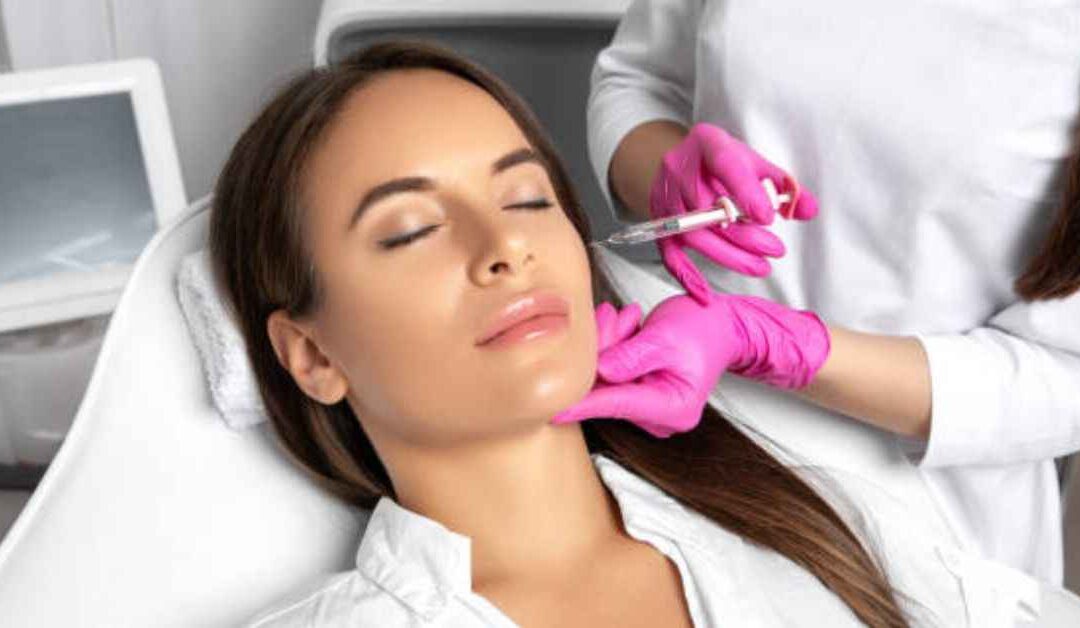We’ve had more blogs on turning-back time and beauty than on any other topic. But biorevitalisation is one treatment which is considered impressive and an anti-ageing beauty secret you should know about.
At one time or another, premature ageing of your skin needs a bit more than just using topical gels or creams. This is also because when you get older, home remedies are not helpful. And in order to control ageing, you need to rejuvenate your skin from the inside out. We’re not saying you should start drinking any collagen drink, but biorevitalisation can be a messiah that can bring your skin back to youth.
Even though you can find several skin treatments that reduce the visibility of fine lines and wrinkles and slow down the ageing process, biorevitalisation is a different kind of fish.
This particular rejuvenation process is more than just an anti-aging treatment. Not only does it give you a supple, radiant, and silky look, but it also leaves your skin looking youthful.
As it’s not a new treatment, but its hype is growing by the day. We met with some trusted skincare specialists in London and gathered the required information on bio revitalisation procedures.
So let’s have a look at how this treatment can reverse the ageing effects.
Is it really a turning-back-time secret?
None of the secrets in this world relates to reversing the age of the skin. The things that only counts are well-managed and administered treatments that could be able to keep their results last longer.
The stimulation of collagen begins when HC (hyaluronic acid) is injected into the dermal layer of your skin. This insertion hydrates the skin and slows down cell fragmentation. Not only this, but bio revitalisation injections also slow down the degradation of your body’s own HC.
This also restores skin moisture and elasticity; hence there will be a huge reduction of pre-existing fine lines and wrinkles.
So when it comes to turning back time, it is one of the best treatments.
Is it an on-the-go, lunch-hour procedure?
Yes, it is.
The treatment can last from 30 minutes to one hour, but this all depends on how serious your aesthetic skin issues are. This time slot of this treatment is other than the time you may spend in your consultation session. The best part is you can go about your activities after the treatment because this is a lunch-hour treatment.
However, before the administration of this skin treatment, topical anaesthesia is used. Since we’re preaching about needles here, all of it depends on your pain tolerance. For some patients, there can be apparent redness or inflammation, which can last for a few hours. Still, I’d insist on using topical anaesthesia.
Noticeable results
HC or hyaluronic acid revitalises the skin’s moisture content, so your skin will be normally moisturised. This will certainly stimulate the skin renewal process.
Fine lines or deep facial lines can also be less apparent while the ageing process of your skin will be significantly slowed down, leaving your skin looking vibrant, radiant and balanced. Body areas treated by biorevitalisation include the décolleté, face, neck and hands.
You’ll be in safe hands
HC is an organic element found in the intra-cellular areas of the skin and tears, actively playing a vital role in sustaining moisture levels and generating collagen, giving your skin elasticity and softness.
Hyaluronic acid is the key structural part of tears and connective tissues. This organic substance is reduced with time, drying and wrinkling skin.
People who shouldn’t consider getting this treatment include breastfeeding or pregnant women, patients with a localised skin disease, patients with autoimmune conditions, patients with serious infectious ailments, and patients receiving drugs and antibiotics that affect blood coagulation.
Is it similar to mesotherapy?
Both methods have substantial roles in aesthetic dermatology and solving problems for different skin types. Given revitalisation, the key differences between both methods are the following:
- Number of sessions: Biorevitalisation involves three sessions; mesotherapy requires 5 to 10 sessions.
- Results: The result of biorevitalisation treatment is quick. With mesotherapy, the result is visible after many sessions.
- Composition: Mesotherapy utilises cocktails of different materials related to the skin issue, while during bio revitalisation, 100 % pure hyaluronic acid is injected.
Although HC is an extremely beneficial and safe substance for the body, there’re no special restrictions on the number of treatments. The only downside is the cost of the session. The more session you get, the more expensive it may pour out, and some certain physical discomfort during the injection happens when your aesthetician doesn’t apply the topical numbing cream.
The procedure of injection for biorevitalisation is quite different. It is based on the option of a specific method on the skin ailment, type of issue and its severity. Usually, the injection of HC is the most delicate and is injected cautiously into the deep and shallow layers of the skin.
Should you be worried about the side effects?
Do you know a substantial lack of hyaluronic in your body can lead to early ageing? A poorly administered anti-ageing treatment won’t only lead to disastrous results but also not add beauty to your skin.
Therefore, not introducing hyaluronic as per the rules may lead to unpleasant consequences such as keloid scars, tissue necrosis, depigmentation, white spots on the skin, nodes on the surface of the skin, granulomas, pink or blue streaks under the skin, Tyndall effect and tissue compaction (fibrosis).
If, unfortunately, your aesthetician is performing the procedure for the first time, one or more signs may appear from the above-mentioned side effects. If these signs appear, then there is a huge doubt regarding the qualification of the aesthetician.


Recent Comments